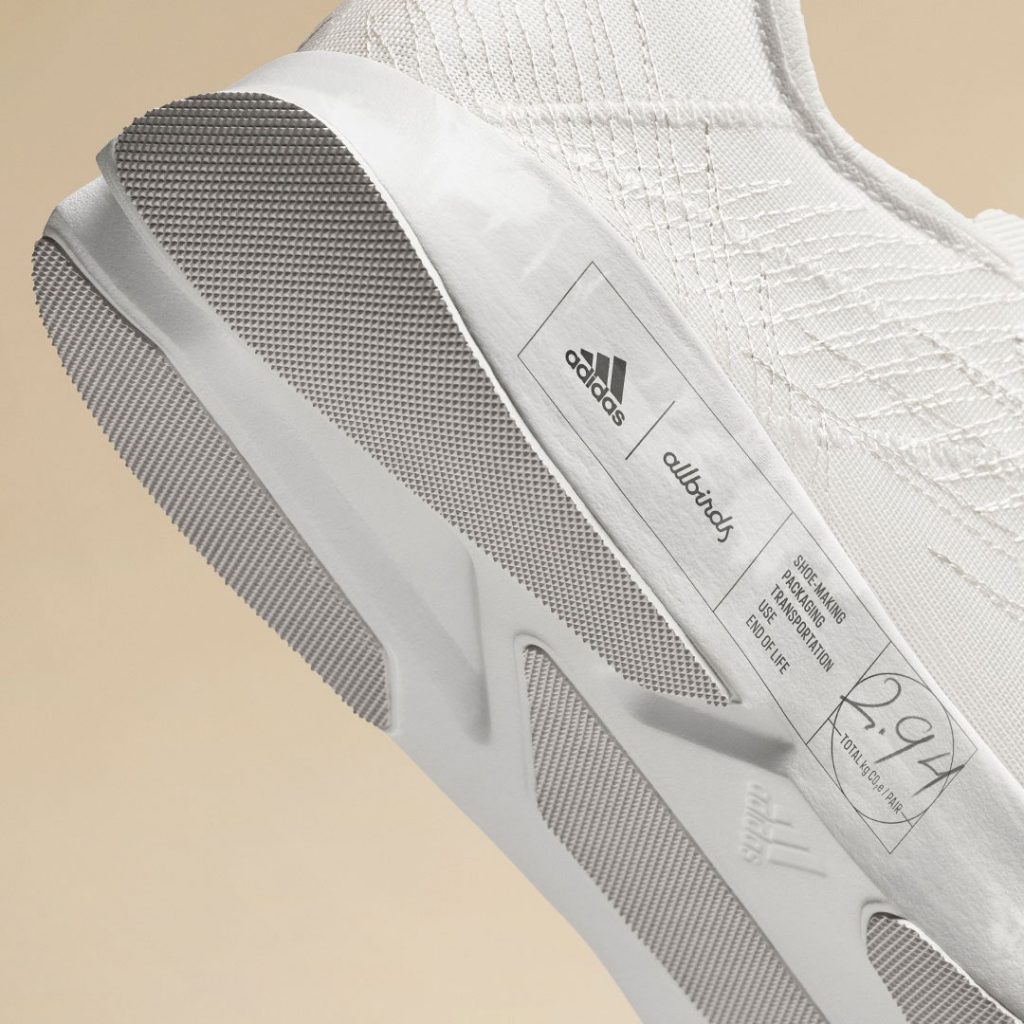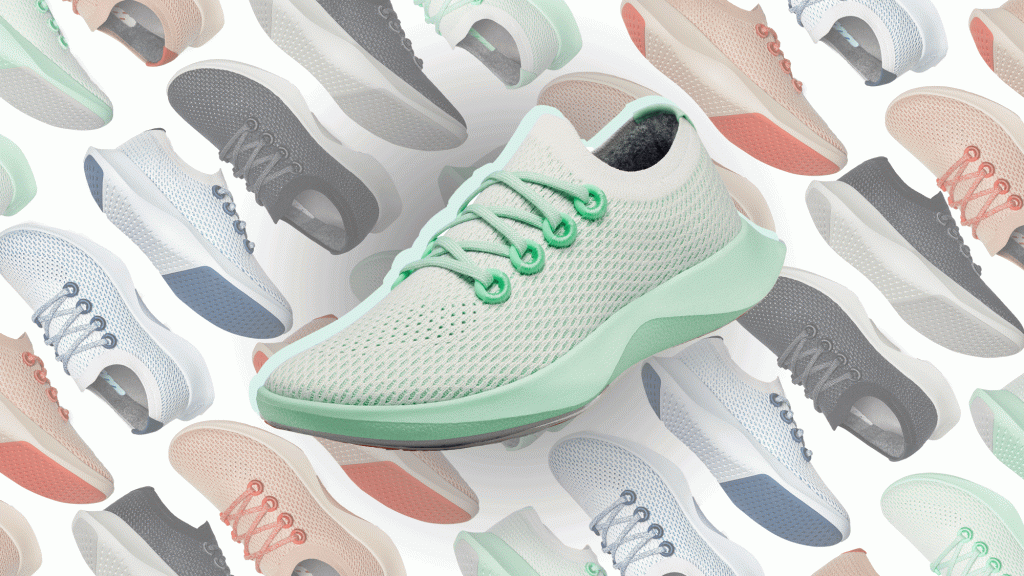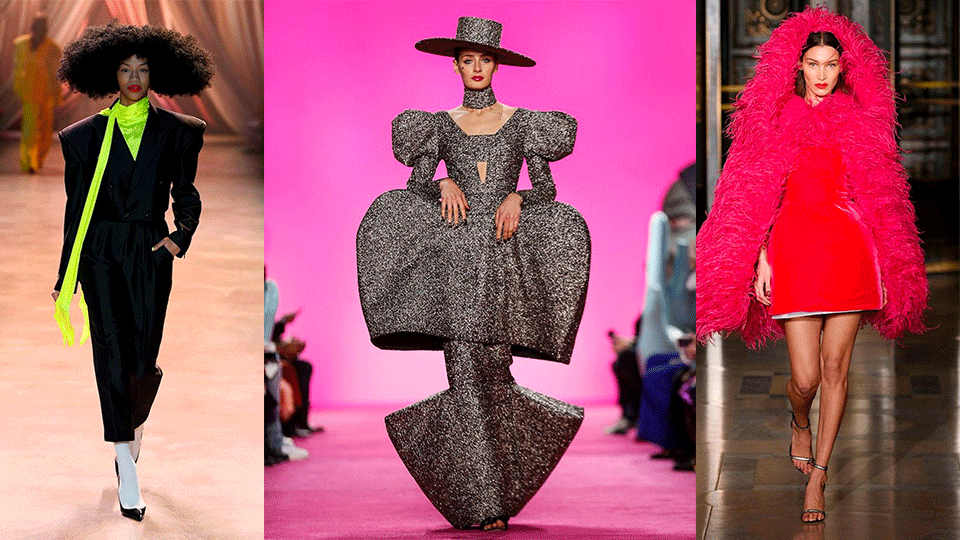- À New Wave to Fashion, À New Way of Living. Download Now on iOS Android Canada SS22
- hello@alahausse.ca
Sneakerheads Rejoice! Adidas and Allbirds Collaborate on Low Carbon Shoe
How Live-Stream Apps are Changing how we Shop
August 14, 2021Wearable Experiments: Real-time Fan Jerseys
August 14, 2021
Written by Clio Reynolds
After a 12-month long project, Allbirds and Adidas have unveiled their collaborative creation, the Futurecraft.Footprint Performance Running Sneaker. The two brands have reimagined the possibilities of sustainable footwear by creating a product that has the least amount of impact on the planet possible. Per pair, the Futurecraft.Footprint measures out at 2.94kg CO2e which makes it the sneaker with the lowest carbon footprint in comparison to any performance runner ever.
When speaking about the collaboration between the two brands, Jad Finck, Allbirds Vice President of Innovation and Sustainability, claims the industry is “focused on the wrong race.” While many companies focus on brand to brand competitiveness, the true focus should be on earth. Furthering his statement, Finck recognized that “the status quo isn’t doing enough to help the planet. Let’s take this race and make it a race to the lowest carbon shoe possible.”

Let’s Talk Carbon
You can’t have a conversation about sustainability without hearing the word “carbon”. So what exactly does it mean? Carbon emissions fall under the category of greenhouse gases which are a leading cause of global warming and climate change. The fashion industry accounts for about 10% of global carbon emissions.
Thankfully, as the conversation around the need for sustainable change in the world of fashion grows, many brands are taking necessary strides in order to reduce their carbon footprint. Adidas, Allbirds and the Futurecraft.Footprint are leading the way for the sneaker industry.
The Collaboration
While the two brands are competitors, they both represent different areas of the market. Adidas are experts in high-performance running shoes, whereas Allbirds puts focus on creating eco-friendly products. Initial plans were for Allbirds to bring their natural materials to Adidas product construction but Sam Handy, Vice President of Design for Adidas Running, made clear that in the end the collaboration is a true blend of both brands. Handy explained, “In practice, it became collaborative with both sides reworking, bouncing sketches … We had the Allbirds team drawing on performance aspects and Adidas working on materials. It became much more collaborative than we anticipated in the beginning.”
The brands started by assessing the already sustainable-minded Adidas performance running shoe, the Adizero RC3, looking at its materials, life cycle and pre-existing carbon footprint. While yes, the RC3’s carbon footprint was lower than the average running shoe, it still measured at 7.6 kg CO2 per pair. By analyzing the brand’s previous take on an eco-minded runner, they were able to recognize what needed to be improved.

Self-developed Materials
The material of the shoe is what drives the high carbon emissions. For the Futurecraft.Footprint, both the Adidas and the Allbird teams developed completely new concepts and materials to ensure they would meet their desired goal of producing a shoe with the least amount of impact on the planet possible. Two textiles were created for the upper portion of the sneaker. This fabric is made up of 70% Adidas Prime Green recycled polyester and 30% Allbirds’ natural Tencel derived from wood pulp. The midsole uses Adidas Lightstrike mixed with Allbirds’ sugarcane-based SweetFoam. The combined expertise from both brands, allowed for the creations of a lightweight textile with a reduced carbon impact that doesn’t lose out on performance abilities
The Process
The reworking fabrication process is just as important as updating the materials, as the shoemaking process itself represents a large portion of the sneaker industry’s carbon footprint. Typically sneakers would use a one-piece upper which often leaves waste. This waste counts against the carbon footprint. For the Futurecraft.Footprint, the production team created a style where the extra fabric would be embroidered onto the shoe, which in the end strengthens the upper of the shoe for running while also eliminating waste. The rubber used for the shoe was designed to be void of any carbon-rising additives. Every aspect from material to production was designed to reduce carbon and create as little waste as possible.

It’s More Than Just The Shoe
Adidas and Allbirds didn’t stop with just the shoe. The companies reformed multiple aspects in order to lower their own carbon footprint – shoe aside. They also updated the packaging. The shoe boxes were redesigned to reduce weight and fit more shoes in a single carton to lower the amount of fuel needed for shipping. The fuel itself used in ocean shipping is made from recycled cooking oil. Renewable energy was created by making the sneakers, this energy was used to power the factories Adidas and Allbirds partnered with.
This collaboration is so much more than just the shoe, the two brands are doing what they can to challenge the ongoing climate crisis, even in the smallest ways possible.
Where Can We Go From Here?
Sustainability can be a daunting topic but projects and collaborations such as the Futurecraft.Footprint sneaker can lead change within the industry. Finck celebrated the project’s success by saying “We are incredibly excited about it. It was a moon shot to begin with. Hopefully it inspires both companies to keep going faster.” The Futurecraft.Footprint started with a 100-pair launch in May to be followed by a 10,000-pair release coming in fall. The two brands are optimistic for a wider release Spring 2022.
Via ÀLA.HAUSSE‘s Multi-functional and Multi-purposeful Fashion Ecosystem- BUY/SELL/RENT/LEND/ (swap BETA 2021) mobile application, INDIVIDUALS & brands ( BETA 2021) are encouraged to REBUY, RESELL, REUSE and UP-CYCLE their personal “Clossets” aka Clothing Assets, along with overstock inventory and samples. Through this consumerism habit shift we indirectly slow down the urgency on fashion’s carbon footprint, aiding sustainability as a whole.
BETA Early Access Application Now Open for CA Fashion Lovers: Apply Now for LAST CALL
with Stories on www.alahausse.ca
#ALAHAUSSE #WEARYOURPURPOSE #HAUSSEPEOPLE







